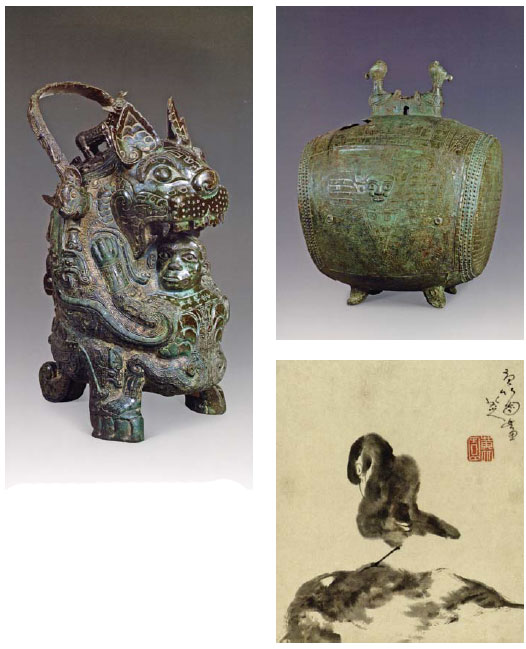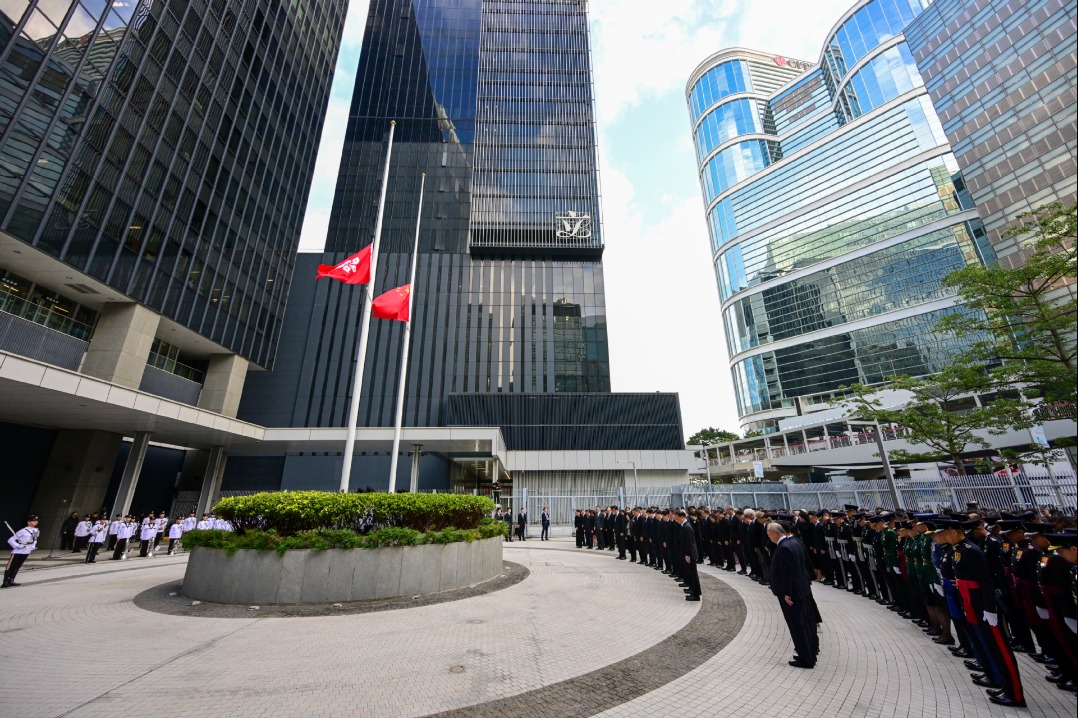Record of relics

New volume of a book series features Chinese antiquities collected by prominent Japanese family
More than a year after it published the first volume of the book series Selected Overseas Chinese Cultural Relics, the National Museum of China issued a second book in late April.
The latest in the set catalogs nearly 200 Chinese antiquities kept at Sen-oku Hakuko Kan, a Kyoto-based museum with a branch in Tokyo. The National Museum of China project started in 2005, when overseas museums with significant Chinese cultural collections were contacted.
| Lyu Zhangshen (left), director of the National Museum of China, and Konan Ichiro, director of Sen-oku Hakuko Kan, pose at the book launch of first volume of the book series Selected Overseas Chinese Cultural Relics in Beijing. Xinhua |
Going by the first two volumes, it seems likely that the book series will dedicate one volume to each of its partner museums.
While the first book talks of 195 pieces of art at the London-based Victoria and Albert Museum, part of its collection of more than 18,000 Chinese antiquities, the new volume offers a glimpse into the Japanese museum's treasure trove of Chinese art gathered since the beginning of the 20th century.
Sen-oku Hakuko Kan houses and exhibits the art collections of the Sumitomos, a family that has accumulated wealth in copper mining and smelting since the 16th century. Among their most famous art possessions are ancient Chinese bronze vessels and mirrors, which are considered among the best in quality outside China.
At first, members of the Sumitomo family bought artworks as decorations when receiving business guests. Then they sponsored Japanese painters to study in Europe in the Meiji era (1868-1912) and also purchased many European paintings, according to Konan Ichiro, director of Sen-oku Hakuko Kan.
The Sumitomos collected bronze ware of the Shang (c.16th century-11th century BC) and Zhou (c.11th century-256 BC) dynasties and later and paintings of the Ming (1368-1644) and Qing (1644-1911) dynasties like works by master painter Zhu Da, who is better known by his pseudonym Bada Shanren.
The Japanese museum was established in 1960 after a donation from the family's collection, including Chinese antiques and Japanese paintings, ceramics, calligraphy and other artworks.
Objects featured in the latest book include a Shang bronze wine container. The vessel is shaped like a tiger holding a man in his forelimbs. The form has opposite explanations: Some see it as a tiger just about to eat a man, while others suggest the man personifies something evil from which a "tiger god" is trying to protect humans.
The Cernuschi Museum in Paris houses a bronze vessel of great resemblance.
The new book includes 57 classical Chinese paintings among which a piece titled Qiuye Muniu Tu (Autumn's Field and Cow Herding) is believed to have been done by Song painter Yan Ciping. Yan served as a court painter and was adept at drawing cows.
Other cataloged master painters in the book are Tang Yin, Xu Wei and Shi Tao.
Ichiro says Sen-oku Hakuko Kan has been serving as a window introducing people in Japan and the world to Chinese cultural traditions, and its collaboration with the National Museum of China on the book has widened that window further, enabling more Chinese to also know about the Japanese museum's collections.
Lyu Zhangshen, director of the museum, says UNESCO's incomplete statistics show that about 1.64 million Chinese cultural relics are dispersed across some 200 museums and cultural institutions abroad, and the details of a considerable number of them are not well known by the public.
He says he hopes the books will not only benefit scholars and museum researchers at home, but also spread the knowledge among ordinary people, many of whom will visit such museums when traveling abroad.
During a news briefing at the launch of the volume on V&A Museum's collections last year, Lyu had said that other world-renowned museums such as the British Museum, Museum of Fine Arts in Boston and the Paris' Guimet Museum might collaborate with the National Museum of China on the project in the future.
A show called Passion for Porcelain, displaying Chinese ceramics kept at the British Museum and the V&A Museum, drew crowds of visitors to the Chinese Museum in 2012.
Chen Lyusheng, deputy director of the National Museum of China, says it plans to upload the books on its website so that more people can read them.
As the museum works with some primary schools on compiling teaching materials on Chinese art and culture, museum officials hope the books' content will be useful for teaching.
linqi@chinadaily.com.cn
| Clockwise from above: A bronze wine container from the Shang Dynasty (c. 16th century-11th century BC) is one of the highlights of the latest volume of the book series Selected Overseas Chinese Cultural Relics. A bronze drum from the Shang Dynasty. An ink painting by Qing Dynasty (1644-1911) master Zhu Da. Photos Provided to China Daily |
(China Daily European Weekly 05/20/2016 page21)
Today's Top News
- Takaichi must stop rubbing salt in wounds, retract Taiwan remarks
- Millions vie for civil service jobs
- Chinese landmark trade corridor handles over 5m TEUs
- China holds first national civil service exam since raising eligibility age cap
- Xi's article on CPC self-reform to be published
- Xi stresses improving long-term mechanisms for cyberspace governance
































